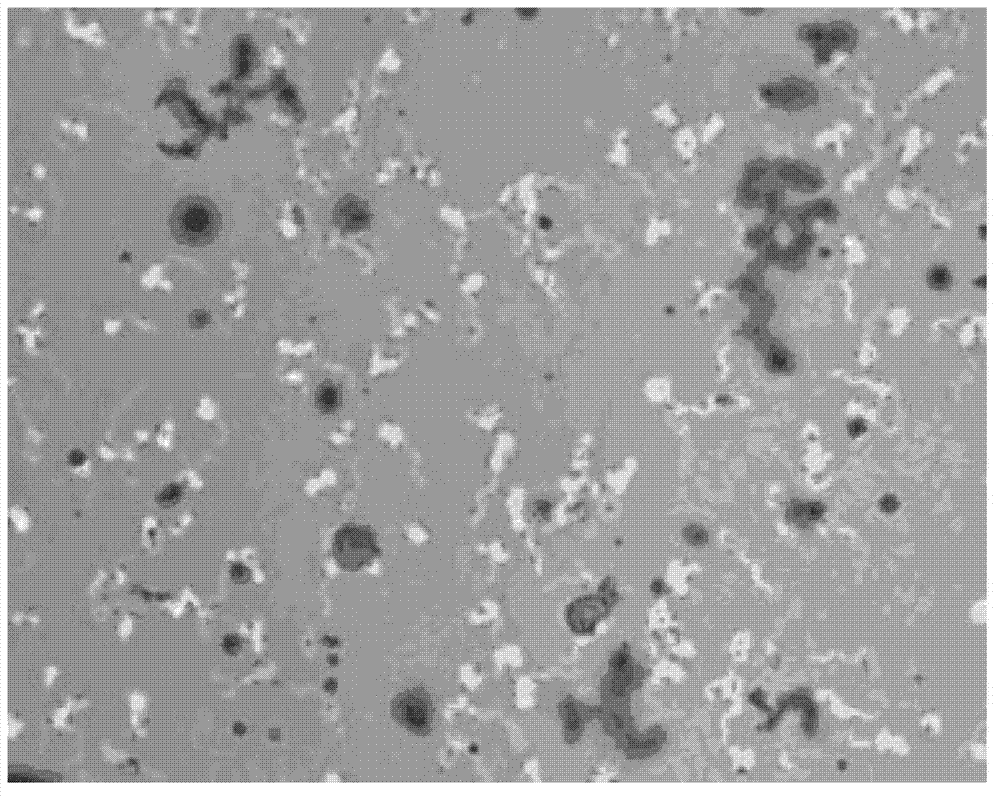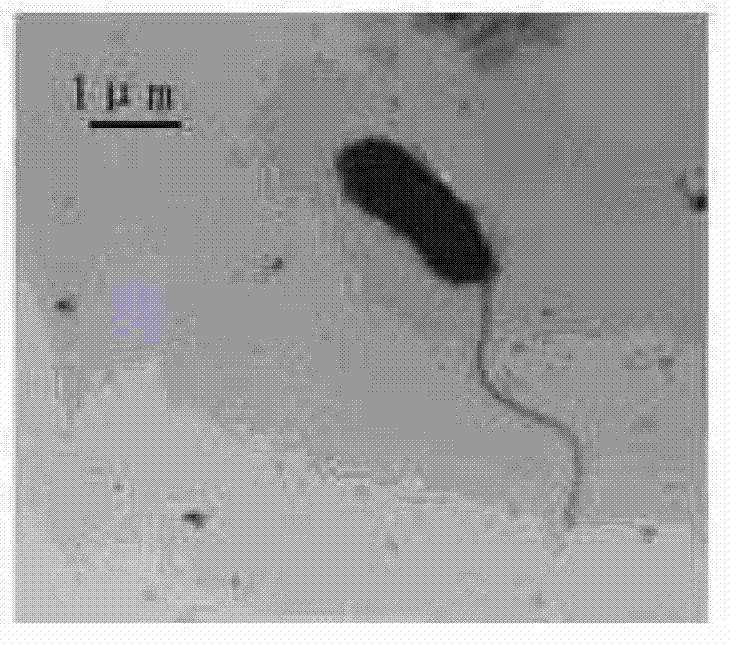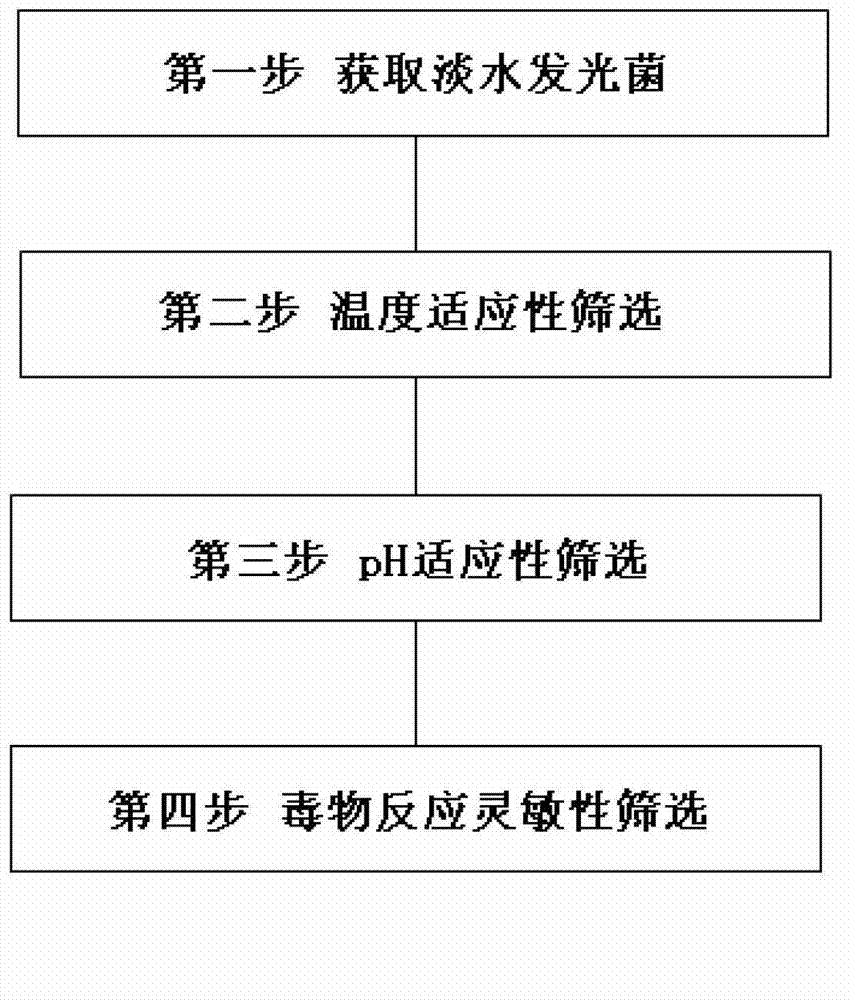Vibrio qinghaiensis Q67B and separation, screening and application thereof
A technology for separation and screening of Vibrio qinghai, which is applied to the measurement/inspection of bacteria, biochemical equipment and methods, and microorganisms, and can solve problems such as poor repeatability of test results, unsatisfactory results, and influence on the luminescence stability of marine luminescent bacteria
- Summary
- Abstract
- Description
- Claims
- Application Information
AI Technical Summary
Problems solved by technology
Method used
Image
Examples
Embodiment 1
[0065] Example 1 The first embodiment of the method for isolating and screening Vibrio Qinghai Q67B
[0066] In the first step, in (1), place at room temperature for 10 hours, in (2), incubate at 20°C for 10 hours, in (3), perform streak separation and culture and repeat three times;
[0067] In the second step, in (1), transfer to five inclined test tubes, in (2), incubate at 20°C for 16 hours, in (3), transfer to five inclined test tubes respectively, in (4), incubate at 20°C 16 hours. In (5), Group I and Group II were cultured at 4°C and 40°C for 16 hours respectively. In (6), Group III and Group IV were cultured at 40°C and 4°C for 16 hours respectively. ( 7) Incubate at 20°C for 16 hours;
[0068] In the third step, in (1), shake culture at 20°C for 16 hours; in (2), shake culture at 20°C for 16 hours; in (3), shake culture at 20°C for 16 hours; in (4), culture at 20°C for 16 hours , (5), incubate at 20°C for 16 hours;
[0069] In the fourth step, in (2), the strain co...
Embodiment 2
[0070] Example 2 The second embodiment of the method for isolating and screening Vibrio Qinghai Q67B
[0071] In the first step, in (1), place at room temperature for 17 hours, in (2), incubate at 20°C for 14 hours, in (3), perform streak separation and culture and repeat three times;
[0072] In the second step, in (1), transfer to eight inclined test tubes, in (2), incubate at 20°C for 17 hours, in (3), transfer to eight inclined test tubes respectively, in (4), incubate at 20°C 17 hours. In (5), Group I and Group II were cultured at 4°C and 40°C for 17 hours respectively. In (6), Group III and Group IV were cultured at 40°C and 4°C for 17 hours respectively. ( 7) Incubate at 20°C for 17 hours;
[0073] In the third step, in (1), shake culture at 20°C for 17 hours; in (2), shake culture at 20°C for 17 hours; in (3), shake culture at 20°C for 17 hours; in (4), culture at 20°C for 17 hours , (5), incubate at 20°C for 17 hours;
[0074] In the fourth step, in (2), the strain...
Embodiment 3
[0075] Example 3 The third embodiment of the method for isolating and screening Vibrio Qinghai Q67B
[0076] In the first step, in (1), place at room temperature for 24 hours; in (2), incubate at 20°C for 18 hours; in (3), perform streak separation and culture five times;
[0077] In the second step, in (1), transfer to ten inclined test tubes, in (2), incubate at 20°C for 18 hours, in (3), transfer to ten inclined test tubes respectively, in (4), incubate at 20°C 18 hours. In (5), Group I and Group II were cultured at 4°C and 40°C for 18 hours respectively. In (6), Groups III and Group IV were cultured at 40°C and 4°C for 18 hours respectively. ( 7) Incubate at 20°C for 18 hours;
[0078] In the third step, in (1), shake culture at 20°C for 18 hours; in (2), shake culture at 20°C for 18 hours; in (3), shake culture at 20°C for 18 hours; in (4), culture at 20°C for 18 hours , (5), incubate at 20°C for 18 hours;
[0079] In the fourth step, in (2), the strain corresponding t...
PUM
 Login to View More
Login to View More Abstract
Description
Claims
Application Information
 Login to View More
Login to View More - R&D
- Intellectual Property
- Life Sciences
- Materials
- Tech Scout
- Unparalleled Data Quality
- Higher Quality Content
- 60% Fewer Hallucinations
Browse by: Latest US Patents, China's latest patents, Technical Efficacy Thesaurus, Application Domain, Technology Topic, Popular Technical Reports.
© 2025 PatSnap. All rights reserved.Legal|Privacy policy|Modern Slavery Act Transparency Statement|Sitemap|About US| Contact US: help@patsnap.com



